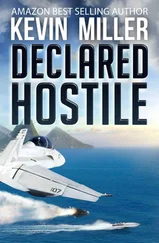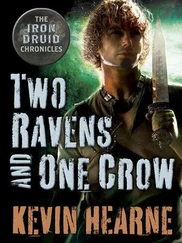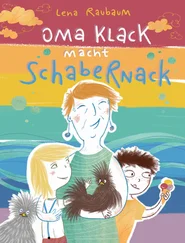With 400 clear of Cat 3, attention turned to Raven 403 . With his heart beating faster, Wilson lifted his arms above the canopy rail as the ordies armed the gun and the Sidewinder missiles on the wingtips. Once complete, he inched forward on signal until he felt the holdback catch him, and pulled the throttles to idle. A Hornet roared off the bow, and Wilson knew he would be next to launch. His eyes darted across the cockpit for a last-minute check. His breathing deep and body tight, the adrenaline began to flow.
The cat officer turned and signaled to the sailor tending the launch bar underneath Wilson. The yellow shirt director then looked up and down the cat track and spread his arms in the take-tension signal. Wilson slammed both throttles to military power, and the engines roared to life. He felt the catapult assembly “grab” his aircraft, and looked at each engine instrument as he cycled the control stick and rudder pedals with his right arm and feet. Engine and flight controls good. One last check of the cockpit displays.
Wilson’s machine strained hard against the catapult, begging to be released. He glanced at the catapult officer who signaled him for afterburner. Wilson shoved the throttles all the way forward, locking his arm in place. He felt the power behind him and saw it reflected in his rearview mirrors. Satisfied, he grabbed the towel rack and placed his head on the headrest. His little finger flicked on the external lights, and the flight deck around him seemed to pulse as the red strobes flashed on and off.
It will come any second now . Wilson’s eyes scanned the instruments. Arm muscles locked in place. Heels on the deck. Braced. Waiting. In tension.
* * *
Walking to his airplane, Weed popped his head over the catwalk aft of El 3, and saw a Hornet in burner on Cat 4. He noted the side number: 403 . With a little jump, the jet shot forward and accelerated down the track, on its way to join the rest of Strike 1A forming up overhead.
“ Vaya con Dios, roomie .”
The tanker pilot extinguished the green light on the refueling store, which was Wilson’s signal to back out of the basket. It also signified that he had received all he was going to get from this Viking. Two thousand pounds . An extra thousand would top him off, but Olive was next in line and needed her share for the long drive to Bandar Abbas.
Wilson tweaked the throttles and slid back as the basket popped off the probe and stabilized in the relative wind. He retracted the probe and slid to the right to join Cajun and Dutch information on the Viking’s right wing as Olive took her turn in the basket. Once stabilized next to Dutch, he glanced up and saw the light clusters of the Iron division aircraft on their Viking 1,000 feet above. The three of them waited for Olive to plug, and once fueled, she backed out of the basket and slid over to Wilson’s right. The Viking retracted the basket and illuminated its anticollision light, banking away from the Hornets . Cajun led his three wingmen in an easy right-hand turn — away from the tanker and toward the initial point some 30 minutes away.
The strike aircraft were assigned exact target times, which allowed the sweep, suppression and jamming aircraft, all coordinated by the E-2, to know where each formation was at a given time. As they pressed out, Wilson took a position abeam Cajun, and the two wingmen got into formation on their respective section leads without a voice call. All four pilots clicked their night vision goggles into place on their helmets and, while maintaining their place in formation, made the necessary adjustments. To the west Wilson saw the desolate coastal plain of Oman rising to rugged mountains, with the glow from the metropolis of Dubai dominating the horizon beyond them. On this side, the town of Fujairah was the major settlement and shone brightly off their left nose.
The radio crackled. “ Sweeps pushing, no alibis.”
Looking north, Wilson found the Sweeps , four dots of light moving among the stars, each one representing a Super Hornet . At his 4 o’clock was the Iron division, moving fast to catch up. At his left seven, well aft, he picked up the suppression aircraft, the Zaps and Trons. He noted Dutch in position and then looked north again at the long coastline of Iran, punctuated by the cultural lighting of the scattered settlements along its length.
A moment later Cajun keyed the mike. His “ Hammers pushing” was quickly followed by “ Irons pushing” from the Iron lead.
Though flying at hundreds of miles per hour, the formation glided as one unit high over the Gulf of Oman. The radio stayed silent except for an occasional “picture clean” call from Knight . The route they took funneled them into Hormuz, closer and closer to the Iranian coast. Their green radar cursors bounced back and forth across the displays while the pilots scanned the horizon through their goggles to pick up any movement. Below him, Wilson saw the scattered lights of the Gulf’s merchant shipping, and noted one very large crude carrier stopped dead in the water. Maybe they’re waiting for this operation to complete before entering the Gulf , he thought. Maybe they know something .
Looking toward Hormuz, Wilson saw a muffled flash in the vicinity of the target. A Tomahawk impact, he guessed. They know we’re coming now . A minute later, he noted a second flash, then two more in rapid succession. His radar warning receiver was clean. No enemy radars were painting his aircraft. Wilson looked over at Cajun and Olive, then over his right shoulder at Dutch. They were all flying perfect form, and the Irons were where they should be. They glided on in silence, scanning their radar and FLIR displays and trying to keep busy without spending too much time looking at the Iranian coastline as they edged closer. Fifteen minutes to go. Wilson took another look at the target imagery on his kneeboard card and, following ingrained habit, checked his fuel.
Suddenly, Wilson got a boop in his headset and his eyes flashed to the RWR display. Now someone out there was painting them, and before long, they would enter several threat envelopes. Up ahead, the Sweeps committed on an airborne contact north of the target. Though the contact was not “hot,” any unknown airborne aircraft ratcheted up the level of excitement for everyone. The Sweeps were there to shield the strikers, and this unknown aircraft could turn and become a threat to the Americans at any moment. The Super Hornets tracked the contact while searching for others, ready to blow the bogey out of the sky should it be identified as hostile. The Hammer and Iron divisions had almost reached the initial point — where they would split to go after their respective targets.
“Ninety-nine, armstrong .” Cajun’s firm tone was evident as he called on strike common.
His second message came over Hammer tac: “Let’s bump it up. Check right twenty. Go .”
In unison, the Raven pilots rolled right to the new heading and accelerated to their run-in speed, each one lifting the MASTER ARM knob to ARM.
An Iron pilot called out. “ Iron two-three, SAM launch zero-two-zero!”
Wilson and the others looked right and saw a plume rising fast from the coast but falling aft as they continued north. “Doesn’t appear to be tracking— ballistic ,” the Iron lead responded, with each Iron pilot reporting “clean.”
Читать дальше












